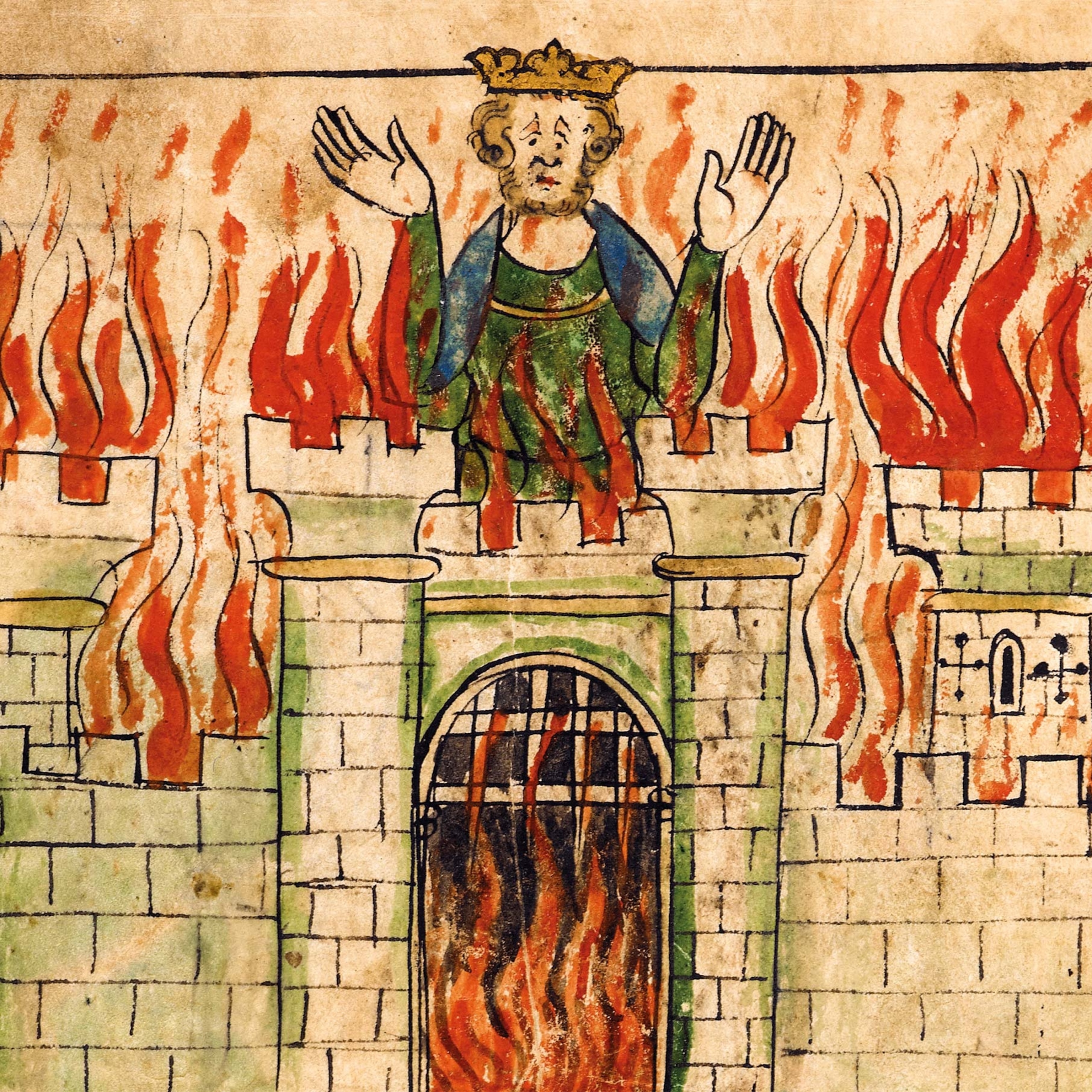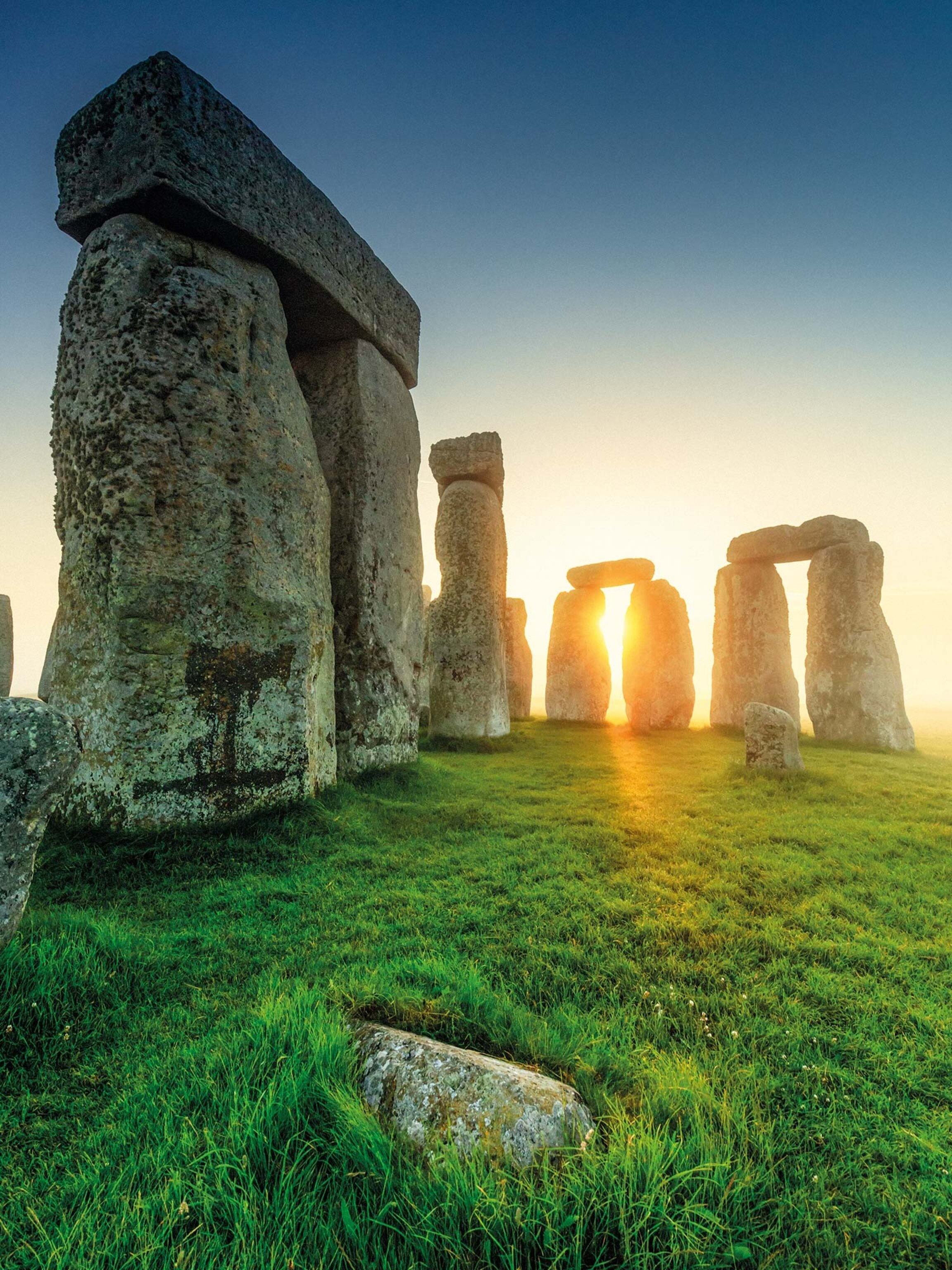
Who was Merlin the Great, really? Here’s the history.
Medieval writers transformed tales of an obscure bard into legends of a mighty wizard who put King Arthur on the throne of Camelot.
Wise old men with magical powers and sometimes long hoary beards are the archetypal wizards. These mystical men possess magical powers that can be used for good—or evil. And literature is full of them. Prospero, the central character in Shakespeare’s The Tempest, is the exiled duke of Milan who obtains magical powers when marooned on an island. The central character of L. Frank Baum’s 1900 novel The Wonderful Wizard of Oz (and the 1939 film based upon it) reigns as the Emerald City’s mysterious magical ruler. The pipe-smoking Gandalf the Grey is a benevolent and powerful advisor in J.R.R. Tolkien’s The Lord of the Rings trilogy from the 1950s. And, of course, there’s the benevolent Albus Dumbledore, headmaster of the wizarding school Hogwarts in the 1990s Harry Potter series of books, who uses his powers for the greater good.
(Some islands, like King Arthur’s Avalon, were pure legend.)
But there’s one wizard—Merlin the Great—who is the inspiration for them all. Since his first appearance in medieval literature, he has evolved over many centuries, transforming from a Welsh bard to a shape-shifting sorcerer. He is the heart of the Arthurian legend as one of it's most compelling characters.

Dark origins
The very first Merlin was not a wizard. Sources from the Middle Ages speak of a Welsh bard or poet from the sixth century, Myrddin Wyllt, who lived in the court of Gwenddoleu, the king of the Welsh-speaking territories of southern Scotland and northern England. As the story goes, Gwenddoleu is killed in 573 at the battle of Arfderydd, and the carnage drives Myrddin mad. He flees to the forests of Scotland, where he lives for the next fifty years as a wild hermit, expressing himself through cryptic verses and acquiring the gift of prophecy.
In the Celtic tradition, bards and poets are linked to forecasting the future. Myrddin Wyllt appears as a prophet in the 10th-century poem Armes Prydein (The Prophecy of Britain) that predicts how an alliance between Celts and Vikings from northern Ireland would drive the Anglo-Saxons out of Britain.
(Not-so-dark ages revealed at King Arthur site.)

Emerging magician
Merlin took on a more familiar form in the 12th-century texts of Welsh author Geoffrey of Monmouth. Skillfully revising the Welsh tradition, he made Merlin a central figure in his three books—Prophecies of Merlin, the poem Life of Merlin, and, most famously, The History of the Kings of Britain. While the main character of Life of Merlin resembles Myrddin Wyllt of the Welsh tradition, the “new” Merlin appears in Prophecies (which is included in book VII of Geoffrey’s History). This revised version is a powerful sorcerer who enables King Arthur to take the throne of England. To create this character, Geoffrey drew inspiration from The History of the Britons, attributed to the ninth-century Welsh monk Nennius.

Nennius’s book tells the story of the evil king Vortigern, a usurper of the throne, who allowed the Saxons to settle on the island of Britain. Vortigern wants to build a castle, but every time he tries, the foundations disappear. His magicians tell him the only way to secure them is to find a fatherless boy, sacrifice him, and bathe the foundations in his blood. So they capture a boy, Ambrosius (Merlin), the son of a nun who claims to be a virgin. The young man confronts the magicians and claims that two giant worms, one red and the other white, reside under the castle’s shaky foundations and are locked in combat. According to Ambrosius, their dispute is a harbinger of conflict between Britons and Saxons.
Birth of a lineage

Demon’s son
Geoffrey blended the character of Merlin, about whom little had been written at that point, with young Ambrosius from Nennius’s story, enriching the narration with new details. Merlin’s mother remains a nun, but the child is conceived with an incubus, a male demons. Medieval people believed demons were cleverer than humans and could predict the course of events. In Geoffrey’s work, Merlin inherits these qualities, which he uses for the good. Geoffrey of Monmouth combined the characteristics of seership from pagan mythology with a promotion of Christian values, creating a unique blend of historical and legendary elements.

Another difference is Geoffrey changes the two fighting worms into two fighting dragons, one red and one white. Merlin explains the red dragon represents the Britons and the white dragon represents the Saxons, who will ultimately achieve victory. In this prophecy, he essentially predicts the early days of the Arthurian narrative. But he doesn’t stop there. Merlin presents a hundred or so prophecies in all, including Arthur’s dominance and the course of England’s unforeseeable future.
Geoffrey’s “new” Merlin was a great success, to the extent that an Anglo-Norman author, Wace, who moved between the two sides of the English Channel, translated the History into his vernacular. The result was the Roman de Brut, a nearly 15,000-line poem in Norman-French completed around 1155. It contains the first literary appearance of Round Table; many believe it was part of an oral tradition long before that. The Roman de Brut is not simply a translation. Wace changed the material to his liking. For example, he removed Merlin’s prophecies. His justification for this was that many passages were incomprehensible, although he possibly wanted to avoid their political nature.
(Witch panics killed thousands throughout history.)




Merlin at King Arthur’s court
A new narrative development in Merlin’s story appeared in the 12th or 13th century thanks to writer Robert de Boron. Inspired by Wace, he composed his Merlin in verse, but only fragments of that work survive to the present. The text was later retold in prose around 1210, perhaps by Boron himself, and thanks to that, the poem’s contents have been preserved.

Boron’s work opens with a cleric Blaise, whois determined to write about Merlin, explaining he is translating a Latin story dictated by Merlin himself. After this introduction, the scene changes, and the reader learns that at Merlin’s birth, a council of demons are conspiring to turn the baby into a kind of anti-christ, their agent on Earth. Their plans fail because the child is baptized by his mother and becomes a Christian, even though he is the son of an incubus. Merlin is a positive character, despite his demonic birth and some aspects that link him to pre-Christian magic, such as the ability to shapeshift (change his physical form at will).
Vortigern then re-appears on de Boron’s text, and his death is foretold by Merlin. The wizard joins the new king Pendragon and his brother Uther in the war against the Saxon invaders. Merlin erects Stonehenge in honor of the fallen and creates the Round Table. It is also Merlin who causes Uther and Ygerne, the Duke of Cornwall’s wife, to meet. Their union results in the birth of Arthur, whom Merlin will mentor. The
text ends with Arthur winning wins the British crown by pulling a sword from a stone.

(Stonehenge was one triumph amid a prehistoric building boom.)
Merlin would continue to evolve from his depiction in de Boron’s work, which laid the full foundation for the rest of the works to come about King Arthur and Camelot. In the 15th century, Sir Thomas Malory’s Le Morte d’Arthur (Death of Arthur), written in English about 1470 retells the Arthurian legend in chronological sequence beginning with Arthur’s birth. Portrayed as Arthur’s mentor who’s instrumental in every aspect of his life, Malory’s Merlin is the culmination of all other versions of the powerful wizard.
(What does the truth behind Excalibur and these other mystical historic objects reveal?)
The metamorphosis of Merlin
The magic of Merlin continued to inspire different portrayals of the character across many different genres well into the modern age. Mark Twain portrayed Merlin as a swindler in his novel, A Connecticut Yankee in King Arthur’s Court (1889). French poet and filmmaker Jean Cocteau turned Merlin the Magician into a cruel and manipulate old man in The Knights of the Round Table (1937).
(These medieval knights were the 'superheroes' of their time.)
One of the most memorable works appeared in 1960: the Broadway musical Camelot, based on the British writer T. H. White’s series of novels, The Once and Future King (1958), in which Merlin is a bumbling but wise teacher who encourages the young Arthur to think for himself.
Blessed blade for England's king

Many films have been based on the Arthurian legend, including John Boorman’s grandiose Excalibur (1981), showcasing Nicol Williamson’s campy Merlin. There’s also the British satire Monty Python and the Holy Grail (1975), in which there is no Merlin at all (or is he the pyromaniac wizard Tim the Enchanter?).
Beginning in 2008, Merlin appeared on BBC One as a fantasy-adventure drama. Recognizing the Arthur legend had been done to death, this popular show presents Merlin in a coming-of-age story as unpolished but loveable as he learns to be a sorcerer. Familiar elements include Excalibur, Guinevere, and Lancelot, but admittedly, it’s a long way from the original Arthurian legend.

Related Topics
You May Also Like
Go Further
Animals
- How scientists are piecing together a sperm whale ‘alphabet’How scientists are piecing together a sperm whale ‘alphabet’
- Orangutan seen using plants to heal wound for first timeOrangutan seen using plants to heal wound for first time
- What La Palma's 'lava tubes' tell us about life on other planetsWhat La Palma's 'lava tubes' tell us about life on other planets
- This fungus turns cicadas into zombies who procreate—then dieThis fungus turns cicadas into zombies who procreate—then die
Environment
- This floating flower is beautiful—but it's wreaking havoc on NigeriaThis floating flower is beautiful—but it's wreaking havoc on Nigeria
- What the Aral Sea might teach us about life after disasterWhat the Aral Sea might teach us about life after disaster
- What La Palma's 'lava tubes' tell us about life on other planetsWhat La Palma's 'lava tubes' tell us about life on other planets
- How fungi form ‘fairy rings’ and inspire superstitionsHow fungi form ‘fairy rings’ and inspire superstitions
- Your favorite foods may not taste the same in the future. Here's why.Your favorite foods may not taste the same in the future. Here's why.
- Are the Great Lakes the key to solving America’s emissions conundrum?Are the Great Lakes the key to solving America’s emissions conundrum?
History & Culture
- These were the real rules of courtship in the ‘Bridgerton’ eraThese were the real rules of courtship in the ‘Bridgerton’ era
- A short history of the Met Gala and its iconic looksA short history of the Met Gala and its iconic looks
- Meet the ruthless king who unified the Kingdom of Hawai'iMeet the ruthless king who unified the Kingdom of Hawai'i
- Hawaii's Lei Day is about so much more than flowersHawaii's Lei Day is about so much more than flowers
Science
- Why ovaries are so crucial to women’s health and longevityWhy ovaries are so crucial to women’s health and longevity
- Orangutan seen using plants to heal wound for first timeOrangutan seen using plants to heal wound for first time
Travel
- Why this unlikely UK destination should be on your radarWhy this unlikely UK destination should be on your radar







